 Currently, diseases of the veins, varicose veins, thrombosis are common diseases that almost everyone faces. If at the time of not providing appropriate treatment, then as a result there can be serious consequences up to a lethal outcome.
Currently, diseases of the veins, varicose veins, thrombosis are common diseases that almost everyone faces. If at the time of not providing appropriate treatment, then as a result there can be serious consequences up to a lethal outcome.
Modern pharmacological firms provide a huge selection of drugs to treat these diseases. Each of them can not only relieve pain, but also inflammatory process.
These drugs include the drug Clexan. It has not only anti-inflammatory properties, but also a restorative effect, so it is often prescribed during prevention before and after operations.
Content
- General
- Pharmacological properties and pharmacodynamics
- Indications
- Restrictions
- destination during pregnancy and lactation
- application rules and dosage
- In venous thrombosis, varicose veins and thromboembolism
- treatment of deep vein thrombosis
- Side effects
- opinion of experts of differentthe profile of
- The voice of the people
- Question price
General information
Clexane is a drug that belongs to the group of anticoagulantslancets with direct action. The drug is used to treat and prevent varicose veins, thromboses, embolism. The active ingredient is sodium enoxaparin.
This component is also called heparin, which is in a low molecular state, obtained by hydrolysis of heparin with alkali( as an ether in benzyl form).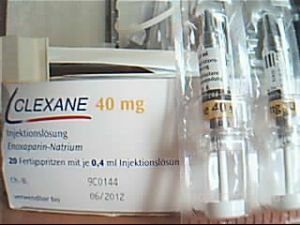
The main raw material for enoxaparin sodium is heparin, which is obtained from the intestinal mucosa of pigs of a subtle species.
Kleksana contains active substance - sodium enexoparin and a clear liquid with a yellow shade for injections.
Produced in the form of syringes, which are filled with a transparent liquid for injection under the skin. Syringes are available in different volumes - 0, 2 ml, 0.4 ml, 0.6 ml, 0.8 ml and 1 ml, which contain 20 mg, 40 mg, 60 mg, 80 mg and 1 gram of the main component - enexoparinand water for injection as a solvent.1 blister contains 2 syringes.
Pharmacological properties and pharmacodynamics
Clexane has antithrombotic properties. It is used as an injectable injection under the skin during the treatment of acute coronary syndrome, deep vein thrombosis, and as a preventive treatment for various pathologies of veins.
The second international non-proprietary name for this drug is enoxaparin. The drug is a heparin in a low molecular weight form, whose molecular weight is approximately 4,500 daltons.
During the use of the prophylactic treatment, a slight change in the activated partial  of thromboplastin time is observed. It also has almost no effect on the state of thrombocytes and binding to fibrogen. Also, during the treatment of various diseases with this drug APTT is increased by almost 1.5-2 times.
of thromboplastin time is observed. It also has almost no effect on the state of thrombocytes and binding to fibrogen. Also, during the treatment of various diseases with this drug APTT is increased by almost 1.5-2 times.
After prolonged subcutaneous injection injections of a systematic nature in a volume of 1.5 mg per 1 kg of body weight, the maximum level of enoxaparin sodium in the body is achieved after two days. Bioavailability during subcutaneous injection is 100%.
Metabolization of enoxaparin in the liver is achieved by desulfating and depolymerizing. Metabolites, which are formed during this process, have low activity.
The half-life of the drug lasts from 4 hours to 5 hours during a single dose. If the medicine is taken repeatedly - 7 hours. About 40% of the remedy is excreted through the kidneys. The excretion of active substance enexoparin in elderly people is slower, this is due to impaired renal function.
Indications for use
The main purpose of Kleksana is to use it during preventive treatment for venous thrombosis, embolism, thromboembolism.
Kleksana injections are also prescribed at the following indications:
- is recommended for patients who comply with bed rest, who have undergone therapeutic illnesses in acute form - infectious diseases in severe form, the presence of respiratory and heart failure, heart failure in chronic form, rheumatic illness in acute form with by the presence of risk factors for the formation of ;
- during surgical interventions ;
- is prescribed for hemodialysis , but provided that the procedure lasts no more than 4 hours;
- during the varicose extension of the deep veins of , which may or may not be accompanied by pulmonary embolism;
- is prescribed for unstable rhythm of angina and myocardial infarction .And also during an acute myocardial infarction in patients who receive drug treatment procedures with coronary intervention.
Limitations for the assignment of
According to the instructions, the drug is not recommended for use with the following indications: 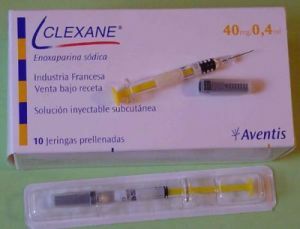
- with the presence of increased sensitivity of the body to the main component - enoxaparin sodium, as well as to heparin and its derivatives;
- is not worth taking up to 18 years of ;
- all kinds of diseases and conditions that are accompanied by an increased risk of severe bleeding - these include stroke of hemorrhagic nature, aortic aneurysm or cerebrovascular aneurysm, and also in the presence of enoxaparin- and heparin-induced thrombocytopenia in severe form, uncontrolled bleeding.
It should also be noted that the drug should be used with extreme caution under the following conditions:
- in the presence of renal or hepatic insufficiency;
- if there is a peptic ulcer of the stomach or duodenum, as well as any other erosive-ulcerative lesions of the gastrointestinal tract;
- in severe diabetes mellitus;
- for retinopathy of hemorrhagic or diabetic type;
- severe vasculitis;
- problems with hemostasis;
- bacterial endocarditis;
- with uncontrolled hypertension of arterial type of severe type;
- for epidural or spinal anesthesia;
- if there are serious injuries associated with the CNS;
- if there is intrauterine contraception;
- in the presence of extensive wounds with severe bleeding;
- when taken concomitantly with drugs that affect the homeostasis system.
During pregnancy and lactation,
Preparation of Clexane during pregnancy is prescribed in rare cases. Usually, it is prescribed when the expected therapeutic effect for the mother is higher than the potential rice for the child.
In addition to this information about whether sodium enoxaparin penetrates the placental barrier during pregnancy, no.
If treatment with a drug is necessary during the period of breastfeeding, then for the period of treatment, feeding should be discontinued.
Application and dosage rules
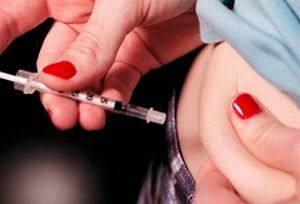 The solution is injected with the injection method, while the patient should be in a prone position. The medicine is injected into the anterior or posterolateral abdominal wall region at the site of the girdle.
The solution is injected with the injection method, while the patient should be in a prone position. The medicine is injected into the anterior or posterolateral abdominal wall region at the site of the girdle.
The needle should be inserted vertically completely into the skin layer, which is clamped in the form of a crease. After the introduction, the crease is not straightened. It should be borne in mind that after injection the place does not need to be ground.
For venous thrombosis, varicose veins and thromboembolism
If the disease has an average form of development with slightly increased risk, Clexane is applied to 20 mg( 0.2 g) for subcutaneous administration once a day.
Injection of the drug is performed 2 hours before the operation, and continues as long as there is a possibility of complications of thromboembolic character. Duration of injections lasts about a week.
If the disease has a severe form, then the drug is applied to 40 mg( 0.4 g) for subcutaneous administration once a day. The first administration is performed 12 hours before the operation, and continues in the following period, as long as there is a possibility of complications of thromboembolic character. Injections are done about 10 days.
How to independently stab Kleksan - visual video:
Deep vein thrombosis treatment
During deep vein thrombosis, a drug is prescribed in a dosage of 1 gram for insertion under the skin. Injections are administered every 2 times a day after 12 hours.
Simultaneously with Kleksan, treatment with oral anticoagulants is prescribed. The course of injection is 10 days.
Side effects of
The instructions indicate side effects that may occur with the use of the drug: 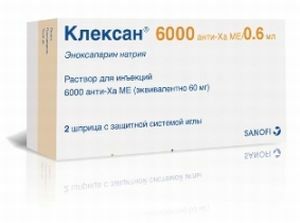
- bleeding;
- occurrence of thrombocytopenia;
- rashes on the skin;
- occurrence of an allergy, which can have a systemic nature.
In addition, after the administration of the drug, local reactions may occur - painful sensations at the injection site, the appearance of hematomas, and in rare cases necrosis.
Also many reviews of specialists note that with long-term treatment with this drug there may be a risk of osteoporosis.
Opinion of specialists of different profiles
From the doctors' comments about the drug Kleksan.
In my opinion, Clexane is a good remedy for the treatment of thrombosis, embolism and thromboembolism.
For all my practice of using this drug, I can say with confidence that this tool has a positive effect and leads to a quick recovery. But nevertheless it is necessary to apply it only under indications and only after appointment of the doctor.
Vascular surgeon
The drug Clexan works well both in the treatment of heart failure, myocardial infarction, and various diseases of the veins - varicose veins, thrombosis, embolism, thromboembolism. This tool has been clinically tested and proven effective. However, do not forget about side effects and contraindications, it is not advisable to use this remedy for hemorrhagic diseases and other conditions specified in the instructions.
Cardiologist
Voice of the people
Thoughts of patients.
The drug Clexan was prescribed to me by my doctor for the treatment of vein thrombosis. I did it in accordance with the instruction before the operation and then in the subsequent period. The entire course of treatment I had a week.
After the treatment, I noticed relief, pains passed, inflammation and heaviness left. However, still a lot of contraindications and side effects of this drug, but effective!
Lyudmila, 48 years old
I was prescribed Clexan for the treatment of varicose veins and thrombosis. I have an increased risk.
I was given it at a dosage of 40 mg first before the operation, then in the following period. In total I received 10 injections. Of course, the condition has improved, but not much. Perhaps I have a severe defeat and a neglected disease. And there are too many contraindications.
Mikhail, 52 years
Price of the question
The cost of the drug Kleksan depends on the form of release and the volume of the syringe: 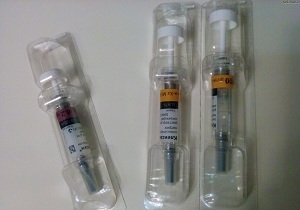
- 0.2 grams 10 pieces - from 1750 rubles;
- 0,4 gram 10 pieces - from 2900 rubles;
- 0,6 gram 2 pieces - from 880 rubles;
- 0,8 gram 10 pieces - from 5000 rubles.
Analogs:
- Fragmin;
- Cíbor;
- Ostochon;
- Gepalpan;
- Traparin lmv.
